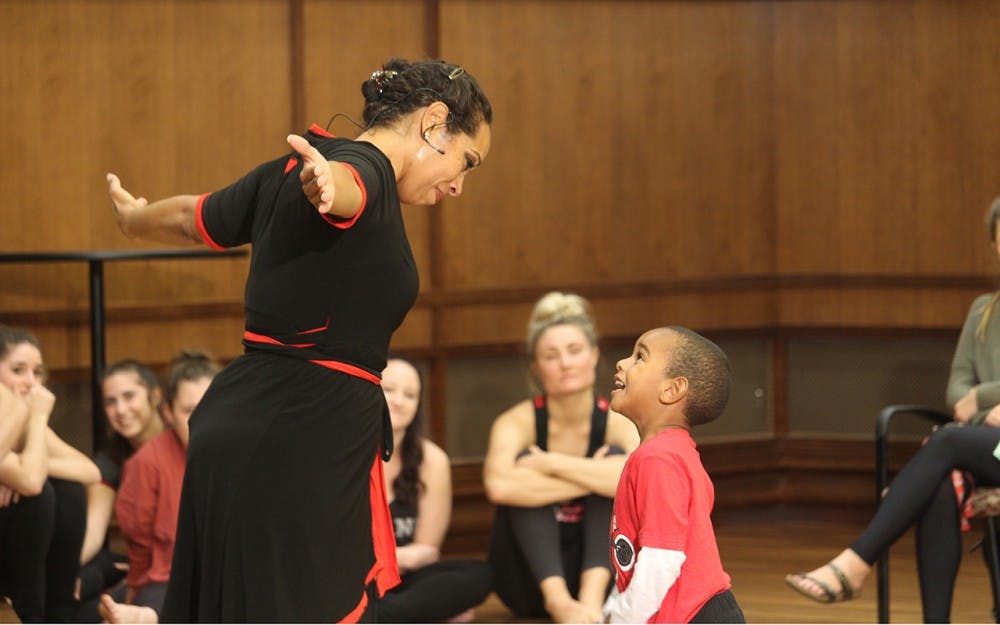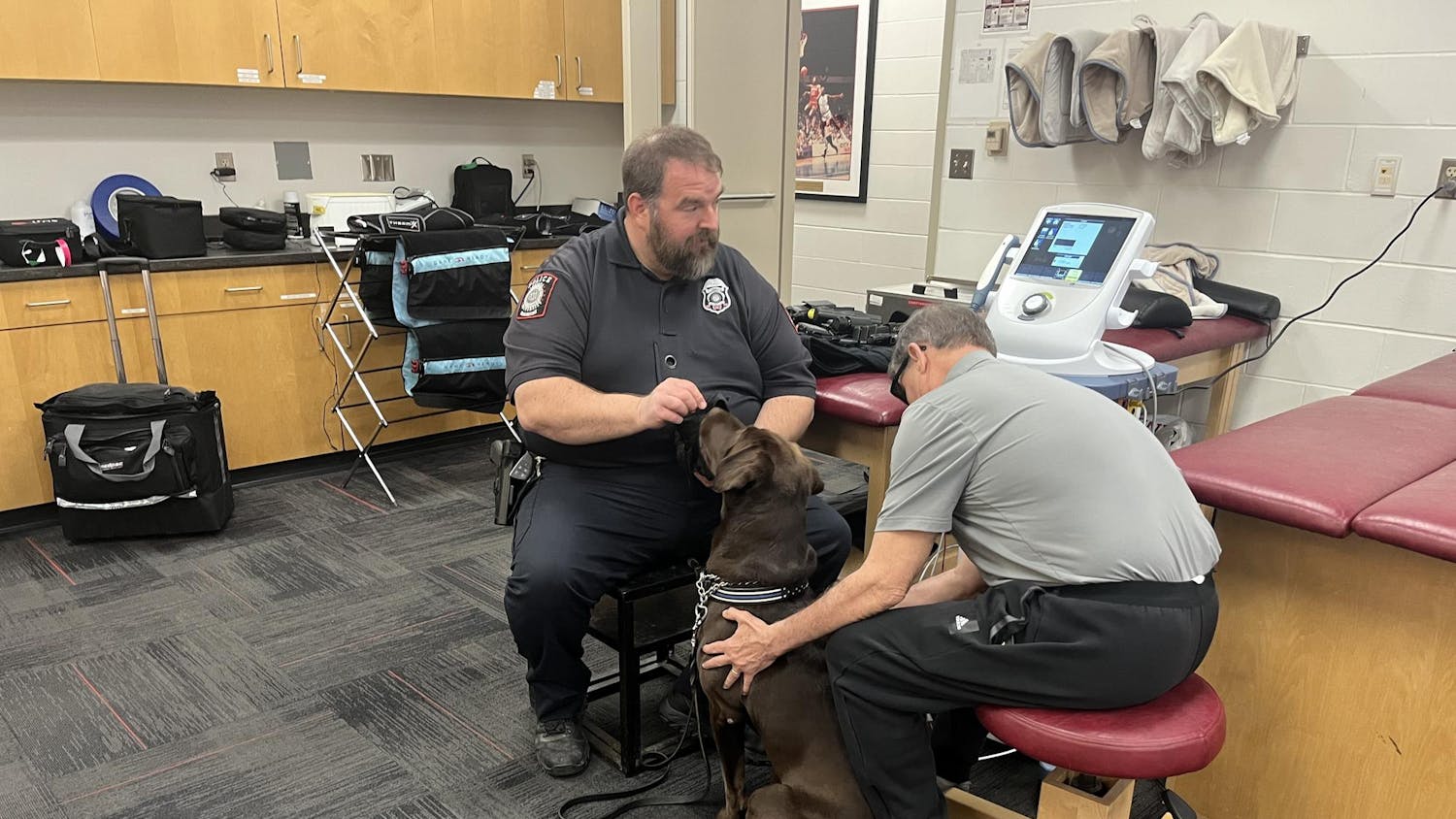Current IU dance students and two professors turned and jumped with impassioned movements during their performance, aimed at a central goal: understanding and portraying racism and its implications in the modern age.
The event took place among portraits of former University presidents in Franklin Hall. The portraits juxtaposed the message of the event with the cultural context of IU’s predominately white, male leaders.
The performance, titled “Embodied Conversations on Racism,” featured dance and a conversation between the performers and audience facilitated by associate professor Stephanie Power-Carter.
Assistant professors of contemporary dance Selene Carter and Nyama McCarthy-Brown also organized and participated in the performance.
IU dancers, students and Bloomington community members were all in attendance.
The event attracted such a large crowd, more than 100 people, that event staff had to add more seats so attendees could sit for the performance.
“We are in Presidents Hall, integral to the embodiment of IU history,” Power-Carter said. “We acknowledge history and how it speaks to the present and even the future sometimes.”
As the performance started, Power-Carter encouraged those in attendance to think of their bodies as a painter’s canvas and movements as their brush.
“We invite you to think about embodiment and how we consciously and unconsciously use our bodies to talk about race,” Power-Carter said.
The performance featured a medley of dancing to song, poetry and spoken words. Both McCarthy-Brown and Carter shared their personal experiences with race in the dance department at IU.
Carter began her dancing with a thought-provoking statement that set the tone for the dialogue.
“I’ve had 14 African American students in the decade,” she said. “Only five graduated. Where are the other nine? Where are they now?”
McCarthy-Brown spoke and danced about her struggles with racial representation in the Bloomington community. She said there is no black pediatrician for her son to go to in the community.
Throughout the 40 minutes of dancing, IU dancers accompanied the performances.
Maddi Werbianskyj, a dance major, attended the performance not just because of her major.
“It’s always interesting to see a different form of expression and have the ability to interpret as you go,” Werbianskyj said.
The performance concluded with a standing ovation before moving to an interactive discussion with the crowd.
“We’ve got to keep this conversation going,” Power-Carter said. “Engage in a dialogue with them with your embodiment.”
Power-Carter instructed the audience to create a movement representing their reaction to the performance. All at once, the audience acted out these motions: standing, sitting and waving their arms.
The discussion continued further with a question and answer session. The session included discussion about the perception of black people and the role of white people in racism .
“The space between us — the eye roll, shoulder shrug — we are all in conversation with each other whether we realize it or not,” Power-Carter said.
As the event ended, Power-Carter highlighted the different organizations available to further engage in the issues discussed.
Culture of Care, the National Association of Black Journalists, the African American Art Institute, Pi Lambda Phi, the Movement Exchange, Showing Up for Racial Justice and GLBT Student Support Services had representatives in the back of the room to talk to attendees after the event.
“Move toward young black people instead of away from them,” Power-Carter said to conclude the discussion and performance. “Don’t walk away from them. Run to them. When you see injustice, have the courage to say something.”




